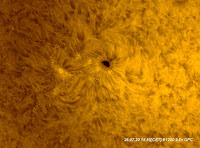*
Sunday 26th. Yet more thinking aloud. Or rather, thinking in text form:
I have multiple problems with my present 10' [3M] plywood dome. By far the worst is that it leaks. Ever more badly!

It leaks all over, but fortunately, only drips around the edges so far. The rainwater which reaches the inside tends to run down the dome and land on the base ring. Where it can be collected in shallow food containers and trays. To be disposed of into a bucket. To be carried down the stepladder and thence outside for distribution onto the thirsty garden plants. 20 litres collected after 12 hours of overnight rain!
The worst leakage is on the shutters. They are only steeply inclined near the bottom. At the top they are, quite literally, horizontal. The central butt joint between upper and lower halves is at 45°. Not ideal for drainage.
My plan was to neatly cover the dome with PVC tarpaulin. Which I would heat weld at the edges of full drops down each tapered gore. The dome is all straight lines. So far easier to cover than a true hemisphere. Heavy duty tarpaulin should provide at least several years of weatherproofing. Which should also prevent the dome from rotting away.

To that end I have emailed a Danish tarpaulin specialists to ask whether they do a sage green. Their colour charts are reproduced in a postage stamp size on their website. Despite the text talking at great length about the myriad possible colours and endless nuances. No response from them so far. Though there may be staffing difficulties due to the pandemic.
Next comes the thermal problems from solar imaging in a [deliberately] green dome. Green absorbs the sunshine and gets hot. With the twin problems of rising heat currents in the light path. Plus a thermal differential between the air temperatures between inside and outside the dome. This can easily exacerbate the heat currents by causing a chimney effect. Heat rises and can only escape through the observation slit. Precisely where the telescope is looking out. Think heat mirage effects and looking at the sun over a garden bonfire!
I have recently discovered that WHITE, lightweight, PE tarpaulins stay cool in full sunshine. This material has a relatively short life span but is quite cheap. Being lightweight it is not difficult to handle. Particularly from wobbly ladders.
It has occurred to me that I could cover just the shutters with a strip down each of them while I am imaging. Or, when it is raining. This would provide an easy but temporary solution to both solar heating and rain leakage. I wondered whether I couldn't rig up some sort of roller system to instantly apply the tarpaulin over the shutters. To be retracted again when not required.
Which brings me to the third problem of high visibility. White is ideal but highly visible from a distance. The shutters are a unique part of the dome. They provide secure and instant closure when the observatory is not in use. When open, they allow the telescope to see out. Another factor is that they shield the sunward dome panels against solar heating. Though the shutters themselves are simultaneously absorbing heat. Even worse, the shutters are situated close to, on each side of the telescope's light path.
Keeping the shutters cool, with white, lightweight tarpaulin, has the twin effect of reduced thermal gain. While simultaneously sheltering the sunward side of the dome. The shutter's own heat would not be transmitted to the shaded panels. Being cooler, the shutters would not affect the telescope's light path. All, without needing a whole, white painted dome. The non-sunward panels are very much coooler than those more normal [perpendicular] to the sun.
Removal of the shutter covering returns the dome to the largely invisible, sage green. A desirable appearance to avoid drawing unwanted attention to the dome.
How best to cover the shutters as an almost daily routine and effortless exercise? Storage rollers at the top would be rather inaccessible but allow ropes to pull the "blinds" down from the safety of the veranda. Rollers at the bottom would require a regular ladder ascent to the dome's zenith to reach pull cords. Not ideal and very time consuming. Even PE tarpaulin does not roll up of its own accord. Springs are very unlikley to suffice. Weights on cords might do. Tension in the tarpaulin material is highly desirable to stop the shutter blinds from lifting in the wind.
*

 Friday 31st 56F. 7am. A cool, bright start with almost no cloud. I am watching the observatory from my indoor, "computer" window for the sun to hit to the dome. We have a low hill to our east and several, largely unmanaged hedges. Which rather impedes a really early start.
Friday 31st 56F. 7am. A cool, bright start with almost no cloud. I am watching the observatory from my indoor, "computer" window for the sun to hit to the dome. We have a low hill to our east and several, largely unmanaged hedges. Which rather impedes a really early start. 
 It is a matter of gain. The PST BF is almost transparent compared to the B1200. So the small boost in gain, which required to expose the proms, is far easier with the PST blocking filter.
It is a matter of gain. The PST BF is almost transparent compared to the B1200. So the small boost in gain, which required to expose the proms, is far easier with the PST blocking filter. 
















































